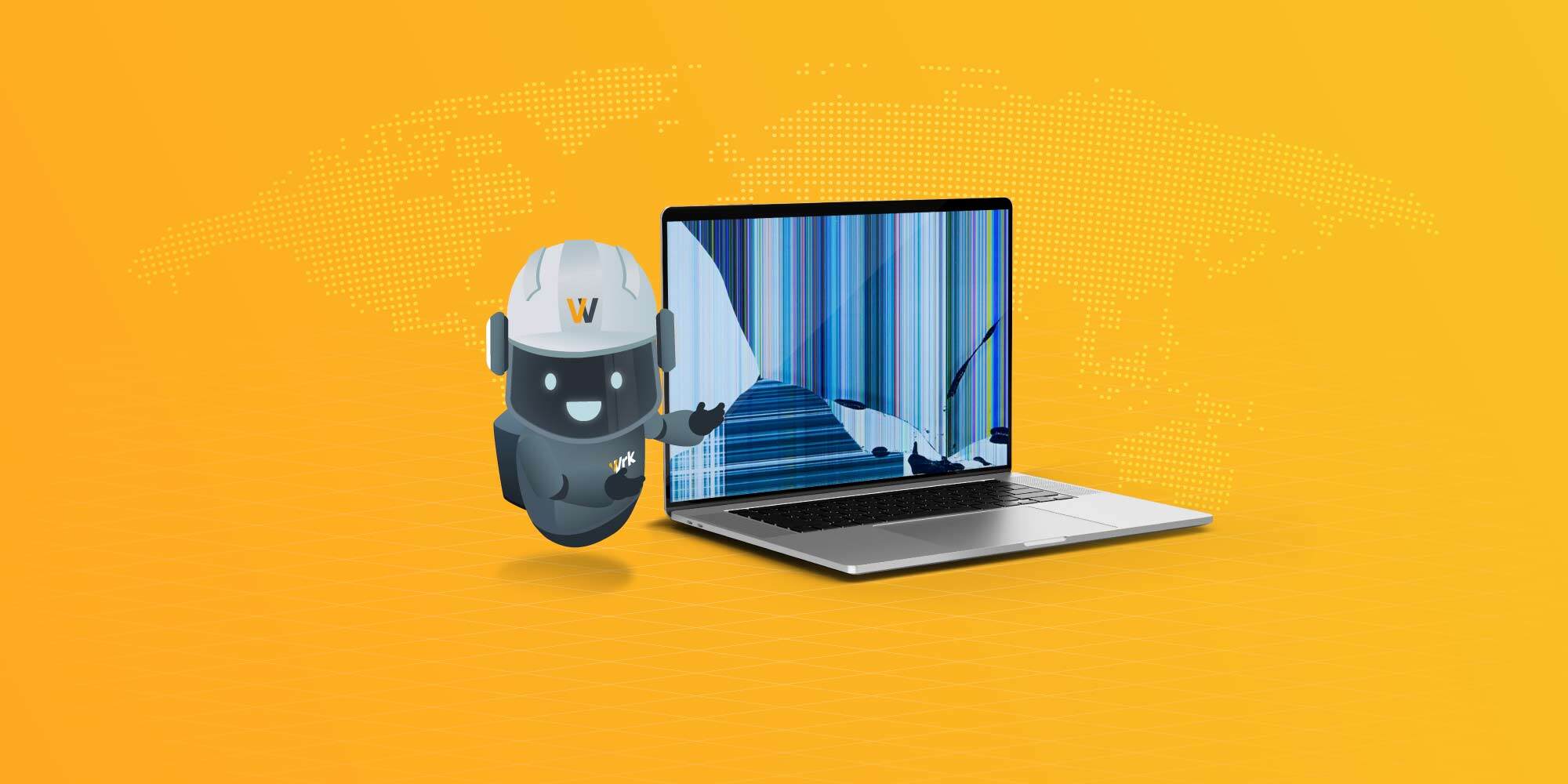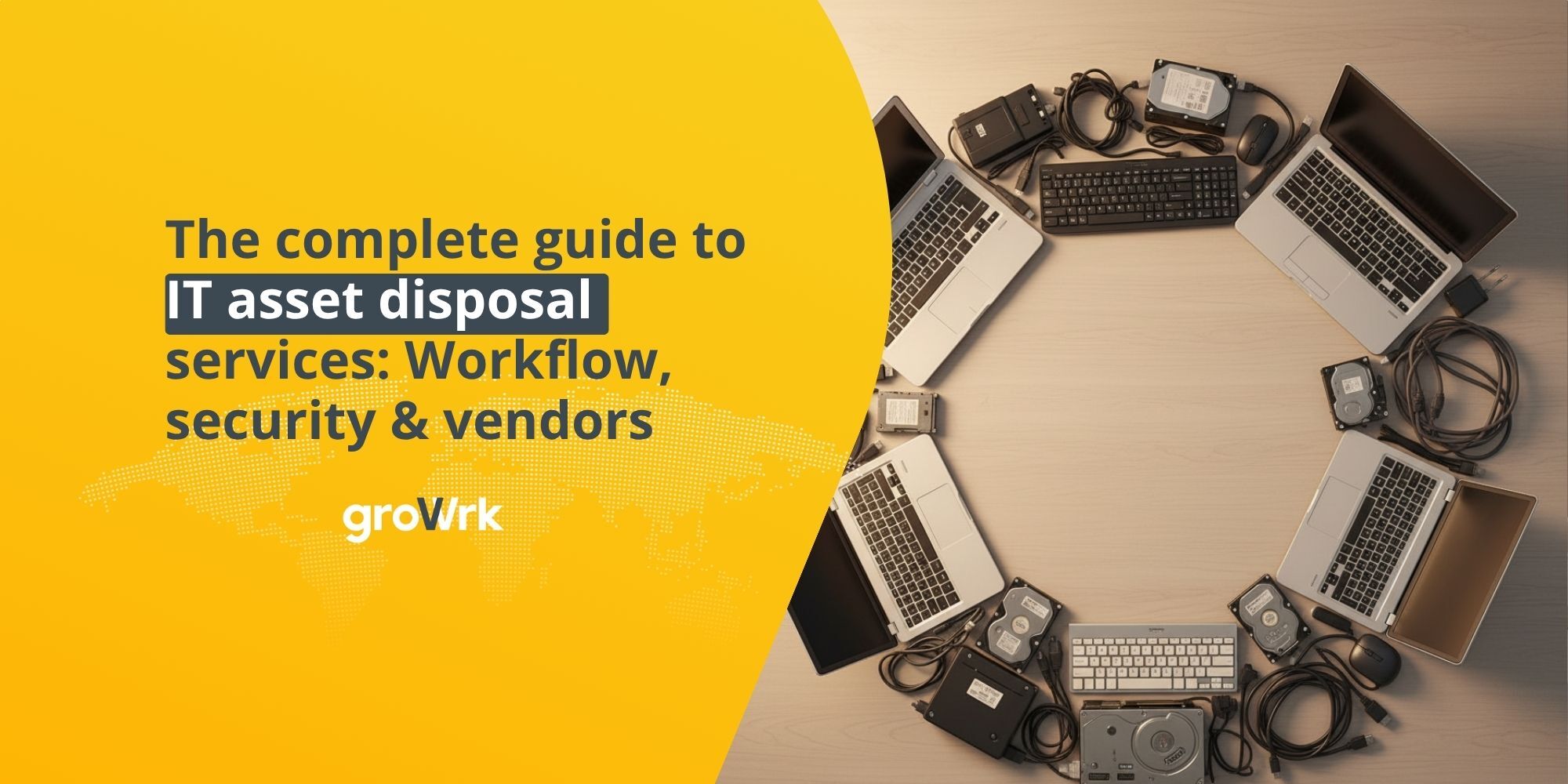Hardware Asset Disposal: How To Safely and Responsibly Dispose of IT Assets
 Mara Quintanilla
Mara Quintanilla
In today's digital age of business, the proper disposal and recycling of hardware assets have become critical components of IT asset lifecycle management. Hardware asset disposal is not a standalone task but rather an integral part of an organization's larger ongoing business process.
Hardware asset safe disposal involves removing outdated or non-functioning devices and assets from an organization's inventory through a safe and environmentally friendly removal. Discarding old hardware and assets goes beyond simply throwing them in landfills. Instead, it requires a systematic approach prioritizing safety measures and equipment compliance with relevant regulations.
Discarded devices can still contain sensitive information that, if not properly handled, could fall into the wrong hands, leading to data violation. An IBM report points out that the global average cost for data breaches is $4.35 million and up to $9.44M in the United States—all the more reason to be intentional and strategic about proper hardware disposal and data sanitization.
So what strategies must companies implement to ensure their data is safe when practicing IT equipment disposal?
Let's look into the best practices of IT asset disposition that can guarantee adequate data removal or destruction and help organizations mitigate the risk of unauthorized access to confidential data and protect their reputation.
Methods for Hardware Asset Disposal and Recycling
Properly disposing of hardware assets is crucial to protect sensitive company data, complying with regulations, saving money, and minimizing environmental damage. Not to mention, it's a necessary step in every IT asset lifecycle management strategy. Let's break down the most common methods available in IT asset disposal services:
1. Refurbishing and Reselling
Usually, the process of asset disposition starts with smaller steps like refurbishing used electronic equipment or reselling it. This can easily extend the life cycle while generating some revenue from resale. IT asset disposal services use this method to help reduce asset waste by giving devices a second chance at use.
2. Donating to Charitable Organizations
IT asset disposal services can offer you to donate your old computer equipment to charitable organizations or schools, providing them with valuable resources and IT equipment they might not otherwise be able to afford. Donations can also help to improve the company's image and brand reputation.
3. Recycling and Repurposing
If refurbishment or donation isn't feasible, consider recycling programs that recover valuable materials from obsolete devices in an environmentally responsible manner. Many IT asset disposal services offer device waste recycling and repair management that will prevent them from going to waste if they are still in good working condition.
At this stage, ensuring all devices have undergone data wiping before being recycled or donated is important. This step alone can prevent leaked sensitive data.
4. Secure Destruction and Disposal
If none of the above methods are suitable, IT asset disposition services can ensure your hardware assets are properly disposed of in compliance with regulations. These companies use specialized equipment for physical destruction, including shredding or crushing devices, rendering them unusable while minimizing environmental impact. Make sure to select an IT asset disposal service that offers a destruction certificate.
For small companies that don't have a place that acts as a data center to manage endpoint devices, it's particularly important to have an end-to-end IT asset management solution that will also take care of hardware disposals and wiping when they reach the end of their lifecycle.
Considerations for Choosing a Hardware Asset Disposition and Recycling Method
When deciding how to dispose of your old equipment or your business's resources, there are many details to consider. Legal and regulatory compliance, environmental considerations, safety measures, and privacy issues–all must be weighed against budgetary limitations. Make sure to select IT asset disposal services that consider the following.
Legal and Regulatory Compliance
Regulations regarding asset waste vary depending on country or region. Ensure your disposal process complies with these laws to avoid fines or penalties. Research local requirements or consult an expert in this area before choosing your IT asset disposal services.
Environmental Impact
Companies can often underestimate the environmental impact that choosing the right IT asset disposition services can have. The improper asset disposal of electronic devices can cause significant damage, including pollution from hazardous materials. Selecting a responsible electronics recycling program ensures that your company's e-waste is properly disposed of in an environmentally responsible manner.
Data Security and Privacy Concerns
When equipment stops working or is too old to be used, companies must deploy an asset recovery strategy to get those devices back from employees.
To protect sensitive information stored on connected devices like hard drives, it is essential to use secure device disposal methods such as data erasure or physical media destruction. This prevents potential data violations from inadequate data wiping procedures during asset recovery and equipment disposal.
Cost and Budget Constraints
-
Refurbishing: While refurbishing may generate some revenue, it can also incur asset disposal services costs related to repair and maintenance.
-
Donating: Donations may be tax-deductible but might require additional resources for transportation or refurbishment.
-
Recycling: Some recycling programs charge fees for certain types of e-waste, so research the associated costs before committing.
-
Destruction: Secure destruction services typically come with a cost, which should be weighed against potential risks from improper asset disposal methods.
Best Practices for Hardware Asset Disposition and Recycling
The hardware asset disposition and recycling process can be complex, especially for distributed teams. A solution that acts as a data center for keeping track of your IT estate can make it easier. However, you can't overlook the end-of-life processes needed for secure disposal. Here are some best practices to ensure security, environmental responsibility, and legal compliance.
Establish Clear Policies and Procedures for Disposal and Recycling
Create comprehensive guidelines outlining the proper asset disposal methods, responsible parties, timelines, equipment and documentation requirements, and other additional information. This will ensure all employees understand their roles in the procedure.
Train Employees on Proper Disposal and Recycling Methods
Educate staff about the importance of proper equipment disposal services and other processes to prevent data violations, e-waste issues, and non-compliance penalties. Offer training sessions or workshops to teach them how to handle sensitive information during asset recovery and disposition.
Maintain a Complete Inventory of All Hardware Assets
-
Protect data center hardware crucial for IT tasks by keeping detailed management records and security updates.
-
Record all connected gadgets within the business regularly to stay informed.
-
Note when assets are due for replacement or have reached end-of-life status.
-
Inventory management helps streamline the asset disposition procedure by identifying which items need attention at any given time.
-
You can easily track and manage your inventory with the help of software solutions that let you know exactly what you have.
Regularly Review and Assess Disposal and Recycling Processes
Continuously evaluate your organization's asset recovery and asset disposition procedures to identify areas for improvement, ensure compliance with changing regulations and industry standards, and adapt to new technology advancements. This proactive approach to hardware optimization will help maintain a secure and environmentally responsible manner of handling hardware assets.
Challenges and Considerations for Hardware Asset Disposition and Recycling
Like with any process, hardware asset disposition can come with some challenges. Here's what you need to consider for issuing a responsible hardware asset disposal order:
Legal and Regulatory Compliance Requirements
Failing to meet the legal regulations governing safe asset disposal services and the disposition of electronic waste can result in severe penalties. It is essential to stay informed about the latest rules on proper disposal orders of IT equipment in your jurisdiction.
Data Breaches and Privacy Concerns
Sensitive information leaks occur when there's no secure offboarding automation and if you don't securely destroy or wipe data from hard drives before disposing of them. To mitigate this risk, it's vital to implement strict data destruction protocols like physical destruction or secure data erasure methods. IT asset disposal services should also include a data destruction certificate.
Cost and Budget Constraints
The cost associated with proper ITAD services may be challenging for some companies; however, a company cutting corners on ITAD services could lead, for example, to improper disposal practices causing the company long-term damage both financially –through fines– as well as environmentally.
How To Manage Hardware Asset Disposition With Growrk
Proper disposition and recycling of hardware assets is crucial for reducing environmental damage, preventing leaked information, and ensuring data security. As we've already outlined, various methods are available to ensure it's done effectively.
When choosing a method for hardware asset disposition and recycling, it's important to consider factors such as data wiping or destruction, environmental impact, and compliance with regulations. That's where GroWrk comes in. Our platform can act as a data center that provides end-to-end device management and asset disposition services, making it easy for distributed teams worldwide to take care of their hardware assets.
GroWrk's end-to-end solution supports you throughout the entire asset lifecycle, from procurement to disposal, so you don't have to worry about noncompliance or data security issues. Book a demo today to get started.







